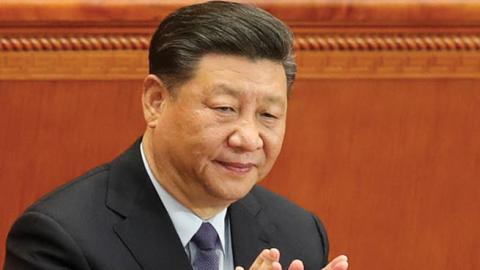The Chinese Communist Party (CCP) does not seem to care much for the so-called “Law of Holes:” the adage that if you find yourself in one, stop digging. The live case study is the cascading economic coercive measures and barrage of insults it is leveling against Australia. Beijing’s malice is proving that the Trump and Biden administrations got it right in identifying China as the comprehensive challenge of our times.
Australia is showing that smaller allies have agency and it's no easy matter for China to permanently coerce democracies into subservience. But there is a long way to go. Australian determination to hold its ground and absorb pain is one thing — but Beijing will have others in its sights, and the test for America is to help its other allies and partners demonstrate the same resolve.
Since 2010, China has perpetrated at least 150 instances of economic coercion against countries and firms. More than half of these occurred over the past two years and most have been directed toward Australia. Why? Australia was a seemingly easy target: heavily reliant on exporting minerals, energy, and agricultural goods, with more than one third of every Australian export dollar earned in the Chinese market. This makes Australia the most China-reliant advanced economy in the world from a trading perspective.
China has imposed punitive measures against more than a dozen Australia sectors and has cost exporters billions in lost revenue. Beijing has also used a very different approach than the punishments dished out in the past against economies such as Japan, South Korea, the Philippines, Canada, and the United Kingdom.
While there was little doubt that previous measures were Chinese responses to policies taken by these countries against Beijing’s wishes, the CCP nevertheless left itself room to deny there was any link between decisions made by these countries and the coercive measures. For example, rare earths restrictions were attributed to a Chinese decision to reduce the domestic processing of rare earths for environmental reasons. Boycotts against South Korean firms were said to be initiated by angry Chinese citizens rather than the regime.
This artifice allowed Beijing some degree of deniability — even if it was hardly plausible — and decreased the chances of a country attaining a favorable determination against China through World Trade Organization dispute mechanisms. The allegedly non-governmental basis for punishment also meant additional arbitrary measures could be added on, thereby creating a sense of heightened apprehension in that targeted country.
Perversely, the difficulty that this created in proving that the punishments were state-based, illegitimate economic coercion allowed pro-Chinese lobby groups in the targeted countries to blame their own government for mismanaging the relationship with Beijing. It also became more difficult for other countries to condemn Beijing’s actions in the absence of an official verdict of illegal behavior. This only encouraged other countries to stay out of the fray lest they suffer the same treatment.
With the recent moves against Australia, Beijing changed the playbook. Many economic punishments were threatened by senior Chinese officials prior to implementation. The Chinese Embassy in Canberra even made the extraordinary decision last November to release a dossier of “Fourteen Grievances” against Canberra as a justification for these punitive measures, including predictable complaints about Australia’s criticism of Chinese actions in the South China Sea and Taiwan.
Yet most of the grievances concerned domestic Australian policies and legislation such as local foreign investment decisions and banning Huawei from the 5G rollout. This confirmed that the CCP was taking revenge on Australia for refusing to give China the right to shape or veto Australia’s domestic policy, and gainsaid the misapprehension that repairing the relationship with China only required Australia to allow China the strategic space in do what it wanted within its immediate periphery.
Beijing now finds itself in a bind.
An important element of its grand strategy is to dilute the strength of American alliances by compelling small and anxious states to accept a more accommodating stance towards China. The true menace of the Communist Party has been revealed to the world and hardened the resolve of the Australian politicians, business and social elites, and citizens to resist Beijing’s terms, meaning the Australian political and psychological preparedness to absorb pain and disruption has increased. This is the opposite of what Chinese coercion is supposed to achieve.
One can take heart that Chinese attempts to groom — or else tame — Australia has failed, but Beijing is hoping the pain heaped on the country will weaken the will of other American allies and partners to show that same courage.
It is why America needs to not only stand by Australia but show it will do the same for others if they find themselves in a similar predicament. Doing that will ensure that the more Beijing lashes out, the deeper the hole it is digging for itself.
Read in The Hill















